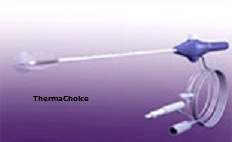
Excessive menstrual bleeding (menorrhagia), is really a debilitating condition that affects approximately 22% of all menstruating women and makes up about a lot more than 30% from the 600,000 hysterectomies performed in the usa. Hysterectomy, the second most often performed surgical procedure in the United States, is the most common surgical treatment for menorrhagia. Although hysterectomy supplies a cure for menorrhagia, it is accompanied by numerous physical and psychological effects. Hysterectomies performed to treat excessive menstrual bleeding is one of the last remedy and is very expensive compare to this simple treatment.
About ThermaChoice Uterine Balloon Therapy
It is a new outpatient procedure to reduce excessive menstrual bleeding. Unlike hysterectomy, which takes out the entire uterus, the process just destroys the lining from the uterus by the use of heat.
What can one expect from ThermaChoice?
In most cases, bleeding during Patient’s period will disappear to moderate or light flow. Some women may feel spotting; several may feel no bleeding at all. Clinical data indicates that as much as 15% of patients may not react to ThermaChoice therapy and could require additional treatment.
Who is a candidate for ThermaChoice?
Gynaecologist should must eliminate abnormal uterine conditions like some fibroids, and Patient’s pap smear and biopsy must also be normal. This is not a treatment for uterine cancer. If Patient may wish to have children, ThermaChoice isn't an option because the uterine lining is destroyed during therapy.
How does ThermaChoice work?
First, a soft, flexible balloon mounted on a thin catheter (tube) is inserted to the vagina, with the cervix and placed gently into the uterus. Then the balloon is expanded having a sterile fluid which expands to fit the size and shape of Patient’s uterus. The fluid in the balloon is heated to 188° F and maintained for 8 minutes while the uterine lining is treated.
Once the treatment cycle is complete, all the fluid is withdrawn from the balloon and also the catheter is taken away. Nothing stays in Patient’s uterus. Patient’s uterine lining has been treated and can lose like a period within the next 7-10 days.
Can one conceive after treatment?
This therapy shouldn't be used if Patient ever want children - actually, pregnancies after ablation could be dangerous for both fetus and mother. While there is an opportunity pregnancy could occur, contraception or sterilization should be used after treatment. Please discuss these options with Patient’s physician.
How patient feel during the procedure?
About an hour before therapy, Patient’s physician may give Patient medication which minimizes cramping during and following the procedure. Patient can also be given a gentle sedative to help Patient relax. Generally, Patient will be awake throughout the procedure and could experience cramping and/or discomfort. Patient’s doctor could use an area anesthesia to numb the cervix and also the uterus. Sometimes patients want to be "put to sleep" using general anesthesia after which it Patient may feel some nausea. It becomes an option for Patient to go over with Patient’s doctor.
What is feeling following the procedure?
Patient may go through mild or moderate cramping just like a menstrual period, and when needed, Patient’s doctor will give Patient a mild medication to create Patient feel more comfortable. After 1-4 hours within the recovery room, Patient should arrange to be driven home where Patient can take it easy throughout your day.
What can patient expect when she go back home?
Nearly all women can go back to work and family commitments through the following day. Sexual activity could be resumed after Patient’s first check-up, usually 7-10 days. Most sufferers have a pinkish and watery discharge for about 2 weeks, sometimes as long as a month. In most cases, the first few periods after the procedure will continue to be heavy but will begin to improve thereafter.
Any post-procedure complications?
Patient should call gynecologist if there is fever of 100.4° F or higher, worsening pelvic pain that is not relieved by ibuprofen (Motrin or Advil) or other medication prescribed by Patient’s physician, nausea, vomiting, bowel or bladder problems, and/or a greenish vaginal discharge.
The risks of ThermaChoice?
The procedure may pose some rare, but possible, safety risks including blood loss, heat burn of organs, electrical burn, perforation (hole) or rupture from the wall from the uterus, or leakage of heated fluid from the balloon to the cervix or vagina. Collection of blood or tissue in the uterus and/or fallopian tubes throughout the months post-procedure can also be possible and could require an outpatient procedure to fix the problem. Just like any type of uterine procedure, could also be the chance of infection, usually can be easily managed with oral or IV antibiotic therapy.





